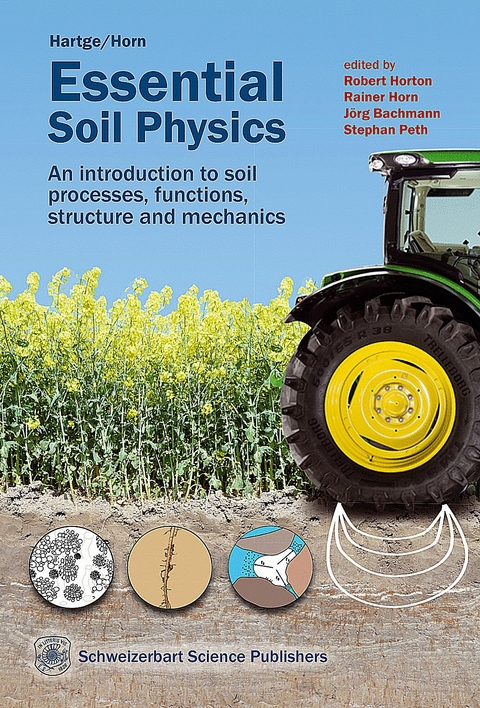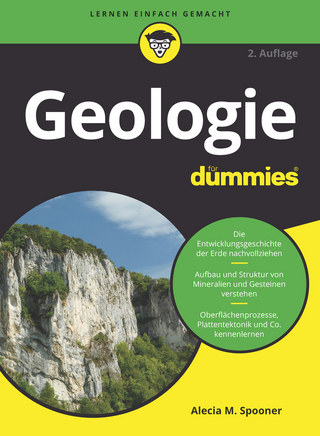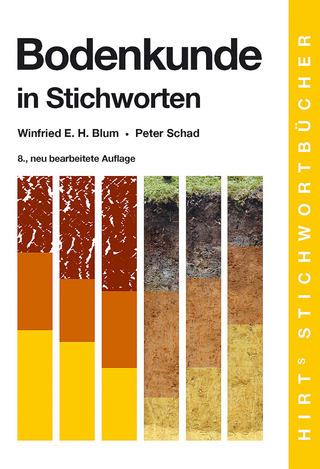
Essential Soil Physics
An introduction to soil processes, functions, structure and mechanics 1st edition, based on the fourth, completely revised and extended German edition
Seiten
2016
Schweizerbart'sche, E. (Verlag)
978-3-510-65339-3 (ISBN)
Schweizerbart'sche, E. (Verlag)
978-3-510-65339-3 (ISBN)
This textbook introduces the reader gently but comprehensively to soil physical processes. The authors discuss both the origin and dynamics of soil physical properties and functions - volume-mass relations of the solid, water and gas phases, grain and pore size distributions, permeability and storage capacity for water, gases and heat - and finally soil deformation and strength in relation to mechanical and hydraulic stresses resulting in structural changes through compaction, kneading, slaking and soil crusting. Unlike other soil physics textbooks, soil mechanical properties are herein described in great detail, because otherwise it is impossible to understand and adequately quantify soil stability and the effects of soil deformation on soil physical functions. This book is valuable for researchers, upper-level undergraduate students, and graduate students of agronomy, soil science, horticulture, geo-sciences, environmental science, landscape architects and everybody interested in understanding the intricate physical processes which control and modify soil functions. Problems are provided at the end of each chapter to enable readers to develop soil physics related problem solving skills.
Also available as hardcover edition Soils are the porous skin of the Earth with variable and complex structures composed of solid, liquid and gaseous phases. Being in close contact with the atmosphere, biosphere hydrosphere, and lithosphere, soils fulfill numerous functions as a filter, buffer, habitat for organisms and resource for raw materials and food rendering them as the basis for life on our Planet. Soils are subject to continuous transformations and their dynamic nature is important for the interaction of biological, biogeochemical and physical processes. But at the same time they are vulnerable and affected by human activity and often subject to degradation. This textbook (based on the 4th, German language edition) introduces the reader gently but comprehensively to soil physical processes. The authors discuss both the origin and dynamics of soil physical properties and functions - volume-mass relations of the solid, water and gas phases, grain and pore size distributions, permeability and storage capacity for water, gases and heat - and finally soil deformation and strength in relation to mechanical and hydraulic stresses resulting in structural changes through compaction, kneading, slaking and soil crusting. Unlike other soil physics textbooks, soil mechanical properties are herein described in great detail, because otherwise it is impossible to understand and adequately quantify soil stability and the effects of soil deformation on soil physical functions. The book treats the physics of water, gas and heat movement in soils and interactions with the solid phase at various scales and other factors in detail -- because these are considered the ultimate basis of any model of soil behavior. Threats to soils worldwide ultimately endanger food security for a growing world population. Because of this, the effects of soil use and degradation on transport processes, soil stability and pore functions are discussed, and options for soil protection, conservation, and amelioration are addressed. The authors close a gap between general soil science texts and very specialized treatments of foundation engineering by integrating the concepts of soil mechanics to achieve a comprehensive description of soil physical behavior. Traditional soil physics topics, such as soil – water – plant relations, soil hydrology and gas, heat and field water cycles are complemented by soil rheology, physicochemical and amelioration sciences. Well-known and recent advances in analytical approaches and methods are well explained to be of use to persons interested in improving plant growth and optimizing crop yield. This book is valuable for researchers, upper-level undergraduate students, and graduate students of agronomy, soil science, horticulture, geo-sciences, environmental science, landscape architects and everybody interested in understanding the intricate physical processes which control and modify soil functions. Problems are provided at the end of each chapter to enable readers to develop soil physics related problem solving skills.
Also available as hardcover edition Soils are the porous skin of the Earth with variable and complex structures composed of solid, liquid and gaseous phases. Being in close contact with the atmosphere, biosphere hydrosphere, and lithosphere, soils fulfill numerous functions as a filter, buffer, habitat for organisms and resource for raw materials and food rendering them as the basis for life on our Planet. Soils are subject to continuous transformations and their dynamic nature is important for the interaction of biological, biogeochemical and physical processes. But at the same time they are vulnerable and affected by human activity and often subject to degradation. This textbook (based on the 4th, German language edition) introduces the reader gently but comprehensively to soil physical processes. The authors discuss both the origin and dynamics of soil physical properties and functions - volume-mass relations of the solid, water and gas phases, grain and pore size distributions, permeability and storage capacity for water, gases and heat - and finally soil deformation and strength in relation to mechanical and hydraulic stresses resulting in structural changes through compaction, kneading, slaking and soil crusting. Unlike other soil physics textbooks, soil mechanical properties are herein described in great detail, because otherwise it is impossible to understand and adequately quantify soil stability and the effects of soil deformation on soil physical functions. The book treats the physics of water, gas and heat movement in soils and interactions with the solid phase at various scales and other factors in detail -- because these are considered the ultimate basis of any model of soil behavior. Threats to soils worldwide ultimately endanger food security for a growing world population. Because of this, the effects of soil use and degradation on transport processes, soil stability and pore functions are discussed, and options for soil protection, conservation, and amelioration are addressed. The authors close a gap between general soil science texts and very specialized treatments of foundation engineering by integrating the concepts of soil mechanics to achieve a comprehensive description of soil physical behavior. Traditional soil physics topics, such as soil – water – plant relations, soil hydrology and gas, heat and field water cycles are complemented by soil rheology, physicochemical and amelioration sciences. Well-known and recent advances in analytical approaches and methods are well explained to be of use to persons interested in improving plant growth and optimizing crop yield. This book is valuable for researchers, upper-level undergraduate students, and graduate students of agronomy, soil science, horticulture, geo-sciences, environmental science, landscape architects and everybody interested in understanding the intricate physical processes which control and modify soil functions. Problems are provided at the end of each chapter to enable readers to develop soil physics related problem solving skills.
Rainer Horn ist Direktor am Institut für Pflanzenernährung und Bodenkunde an der Universität Kiel. Er studierte Gartenbau in Hannover und promovierte 1976 im Bereich Bodenkunde. Fünf Jahre später schloss er an der Technischen Universität Berlin seine Habilitation ab. Er ist Ehrenmitglied der Bodenkundlichen Gesellschaft Rumäniens und Fellow der Soil Science Society of America. Von 2003 bis 2006 war er Präsident der International Soil Tillage Research Organisation (ISTRO).
| Erscheinungsdatum | 02.08.2016 |
|---|---|
| Verlagsort | Stuttgart |
| Sprache | englisch |
| Maße | 170 x 240 mm |
| Gewicht | 850 g |
| Themenwelt | Naturwissenschaften ► Geowissenschaften ► Geologie |
| Naturwissenschaften ► Geowissenschaften ► Geophysik | |
| Weitere Fachgebiete ► Land- / Forstwirtschaft / Fischerei | |
| Schlagworte | Bodenphysik • soil amelioration • Soil erosion • soil functions • Soil Hydrology • Soil Mechanics • soil protection • Soil Stability |
| ISBN-10 | 3-510-65339-4 / 3510653394 |
| ISBN-13 | 978-3-510-65339-3 / 9783510653393 |
| Zustand | Neuware |
| Informationen gemäß Produktsicherheitsverordnung (GPSR) | |
| Haben Sie eine Frage zum Produkt? |
Mehr entdecken
aus dem Bereich
aus dem Bereich
Baugruben und Gründungen
Buch | Hardcover (2024)
Springer Fachmedien Wiesbaden GmbH (Verlag)
59,99 €


